Video Games as Art
With our previously established definitions of art (the result of the act of creation with artistic intent by the creator) and video games (typically a combination of interactivity (gameplay), story, and aesthetics, all tied together by an element of player agency ) established, drawing the line between the two doesn't seem as daunting as initially thought: there's always some reservation in disestablishing the norm that exists in a culture (this norm being that the only things worthy of being called art are those that can exist within galleries, those that function within very strict definitions: definitions we've changed). If a video game is created with artistic intent by someone, then wouldn't it stand that the result of the development process for the game is art, with everything that has been contested as being valid art?
It seems like a pretty easy line to draw, in my opinion, and it's one that's finally starting to solidify a lot more in the past decade than it ever has before. While many art scholars would probably still cringe at the thought of video games being included in a gallery setting among paintings and sculptures—generally being a product often made for mass consumption, and thusly (in their ideology) not being worthy of being called "art"—even those high echelons of "fine art" are starting to recognize the value in the medium. A recent Smithsonian exhibition—fittingly titled "The Art of Video Games"—explored the historic development of video games as an interactive medium: from the early bips and boops of a Commodore 64 (or my own personal introduction to video games, the Mattel Intelevision. Look it up, it's awesome) to the high resolution graphics and processing power of today's technology.
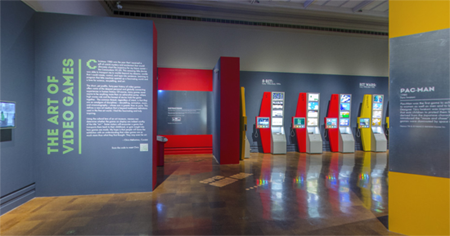
Even the Museum of Modern Art has recently acquired several video games to add to its extensive collection of fine art: both early classics like Super Mario Bros. and modern explorations of the medium on both a graphical and emotional level like Heavy Rain grace the list.
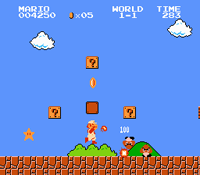
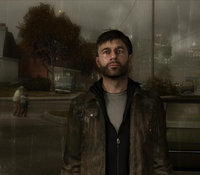
Ignoring the purely visual and aesthetic aspect of video games for a moment (which, granted, sounds weird in this context, since we're talking about visual mediums), video games actually provide something very unique to a viewer: a chance to actively engage in an experience, almost akin to an interactive art piece. A viewer is not only able to see a narrative or an action, but one's interaction with a game is what causes it to progress. In this way, the viewer becomes an active input within the narrative, transforming from a passive viewer to an active player. This specific roll creates an emotional resonance between the player and the game protagonist, much like an aesthetic experience when viewing art, but even deeper and more compelling: the player is placed directly in the shoes of the game protagonist, and thusly, can interact and empathize with the content of the game on a level that removes the boundaries that a gallery setting may have for art. In this way, video games can communicate so much to a player because there isn't the overture of elitism much like the one that exists within a museum1: the player is at much more freedom to explore and immerse themselves in the work because there's less fear of "breaking" the rules.
To be clear, that's not to say that other forms of interactive art are somehow lesser works or less important than video games: interactive art that is meant for gallery often is unable to escape the pretense that museums bring that, in many cases, makes them less successful, in my opinion. There's an inescapable presumption surrounding work that exists in a gallery space: look, don't touch. This makes interactive art tricky in such a setting, because viewers get a notion that they can interact with a piece, but feel like they're breaking a rule when they do, and so the immersion is disjointed and forced. This problem is sometimes avoided by creating interactive works that simply respond to viewer presence , but then it becomes a more passive relationship between work and viewer: the art changes simply by a viewer being there, not directly interacting with it in any way.
That isn't to say that there isn't any presumption with video games like there is with art in museums—in fact, the presumption starts the moment you buy a game: the box art2 itself is akin to the set-up of a museum. It's there to set the stage for how you're going to interact and experience a game: a silly, lighthearted game like Kirby has fitting boxart with the cute characters all over it in pastels3, whereas a game with a more serious tone may use a more "hardcore" depiction of the game's protagonist with the blood-spattered logo ominously plastered across the front.

Regardless, the boxart is kind of like a museum for a video game: it sets up your expectations for how to interact with the game you're about to play. But because this can be crafted to tailor to each game specifically, there's more freedom and less hesitation with video games as an interactive art (since many interactive art pieces must exist within the confines of a museum), if we are partially defining art by the reaction it evokes in the viewer (or player, in this case).
Graphically and visually, video games have become astounding, but on a philosophical level, they have become reflections of our worlds in some of the most thought-provoking ways. To me, the concept of video games as art just seems natural: video games are just another medium for artists to explore, and just because they're new or varied shouldn't exclude them from the classification.
But it is understandable that such a correlation might not be enough for some people. "But art has had this immense history behind it!" some might cry out in objection. "Art has been studied, used as a tool to understand our history and cultures, developed over time with movements such as the Renaissance and Post-Impressionism and Modernism! It must have structure! If anything is art, then who is to say what isn't art!" they may yell, chucking art history textbooks down at the heathens of society who dare to claim that something as base as a video game can be considered art. "Who is to limit what goes into our museums, what serves as pillars for our culture! Soon cats will live in harmony with dogs, and the end of days will be upon us!" they shout, raiding the nearest academic establishment in order to confiscate any art piece that exists in the so –called canon in order to save it from the grubby fingers of the commoners.
Alright. Maybe I'm over-exaggerating a bit here. Let's break down the counterargument reasonably:
1. Art has a traceable history behind it, and has developed over time. Video games, being a more modern invention and expression, do not.
Newsflash: nearly every form of media changes over time and adapts to an ever-shifting culture, no matter how new it may seem in the scope of history; this isn't some attribute only limited to gallery pieces. Don't get me wrong, the history and development of art is extremely valuable, but much like the Lascaux Caves serve as a historical precedent for the Renaissance masters and contemporary painters now, so did the little pips of an Atari 3600 lay the groundwork for games today that are aesthetically astounding, photorealistic, and innovative.

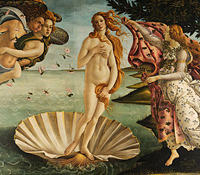

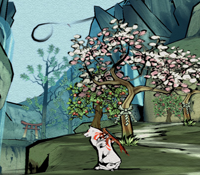
Looking purely on a visual level, video games have developed by leaps and bounds in the last ten years alone, let alone spanning across the history of video games. As technology developed, people wanted to explore the limitations and horizons of that technology. How many colors can be shown on the screen at one time? How can I render this character in a new way, using higher resolutions? Even now, with the ability to create graphics that can emulate the most accurate photography, people are still pushing the boundaries in order to develop new visual styles that are appealing and intriguing, while others are using the ability to be photo-realistic in order to skew the perception of reality for the player in the game.
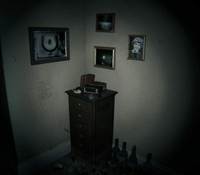

Huh. The development of new visual techniques after the ability to replicate reality visually. Sounds familiar, doesn't it? Maybe ring a historical bell? How about the phrase "basically the same way Impressionism developed, being a response to the development of photography"?
Not only have we reached a technological ability to create environments that emulate real-life, but we've decided to use this technology to explore different aesthetics and artistic developments, much like how illustration still exists among abstraction.


2. Art is a tool used to understand our culture, and the cultures of others. Video games, on the other hand, are simply forms of entertainment, and not deep and meaningful in anyway.
True, this may be a hard point to see among some of the more mainstream titles that get paraded as the media that is "corrupting our youth" and the like, but video games can serve as a valuable communication tool for those who are familiar with their language. Many of the people entering the so called "real world" have had both video games and the internet exist very prominently in their lives—video games become a point of congregation for a certain generation, and can also serve to connect generations and lead to better understanding and a better world: much like art can.
Because video games have become a much more accessible platform of expression as of late—one that both isn't limited by the walls of a gallery to be seen and more recently can be used even by those who do not have grand programming skills through engines like Twine and Ren'py—more people can use video games to tell their own stories, be they more narratively focused (such as Long Live the Queen and The Yawhg) or something of a more personal and powerful message (such as Depression Quest and Gone Home)4.
This is not to say that video games have overshadowed he traditional concept of art on a communication front, but it is easier to communicate complex themes and messages through a medium one is familiar with, and with the up and coming generation, video games are as second nature as reading a book or looking at a painting.
Even for those games that may be considered "pure entertainment," isn't there value in recognizing that as well? What does it say about the way society is progressing that distraction and immersion away from worldly cares is becoming so much more widespread and important in the media that we consume? To draw an even further parallel, isn't all art a reaction (in some way or another) to the society and culture around the creator, be it a political reaction or just an aesthetic one? Monet's Haystacks was simply his exploration of light and color on a single subject, and the fine art world still deems it valuable. The original Legend of Zelda, at its core, was just about an adventurer exploring caves and discovering the wonders of a dangerous world, and yet such expressions are often deemed worthless because they were made in a medium whose intent has been established as "entertainment" only. Both Haystacks and Legend of Zelda (NES) were explorations of a simple concept, and even though the medium is different, they are still valuable works in their own way, and one shouldn't be diminished over the other because of its modern and still unclear medium chioce.
3. Art has structure! STRUCTURE!
Nope; or at least, not really. Art only has structure because people imposed structure on it: it's not like artists in Italy the 1400's woke up one day and said "What a beautiful day in the Renaissance!"5 Art only has periods and movements because historians have organized them as such; genres only exist so we can differentiate media for ourselves in a moment separated from creation. Structure does not define art in any organic way and using this as an argument to eliminate video games from its purview just doesn't make any sense.
This argument also makes the assumption that all video games are the same, like they can be grouped into one basket and sold together at a farmers' market or something. A better representation would be to say that video games are the farmers' market: you've got one stand that sells apples, another that sells cucumbers, another that sells some weird fruit you've never heard of but it looks kind of cool.
Video games are a medium6, one that exists under the broadest umbrella of art. No amount of argument is going to change that, for both reasons of aesthetics and communication.
Back to DEFINITIONS Continue to VIDEO GAMES AS THERAPY1: That isn't to say that elitism doesn't exist in the video game world, because that is by no means the case, and it can be said that the issues that exist with gate-keeping in video games are very similar to that of museums and art in general. The elitism being referred to here is a bit idealistic, but mostly plays on ideas of accessibility, as will be addressed throughout. (Back to text) 2: That is, unless you're a cool kid who downloads all your games online now, but the same can be said for title screens! (Back to text) 3: Though apparently US boxart of Kirby games gives that little pink puffball angry eyebrows regardless. I do not understand this phenomenon. (Back to text) 4: I should note that not all of these aformentioned games are built on engines like Twine or Ren'py, but they are all small, independent creators or teams (and some of my personal favorites). (Back to text) 5: Or rather, "Che un bel giorno nel Rinascimento!", since they were in Italy, you know. (Back to text) 6: Within there exists many genres. (Back to text)